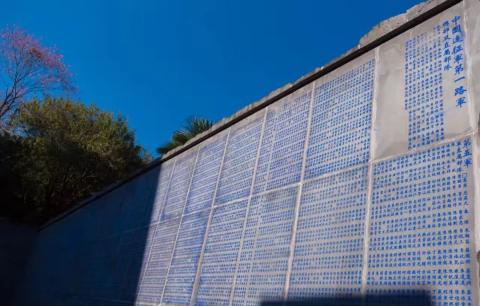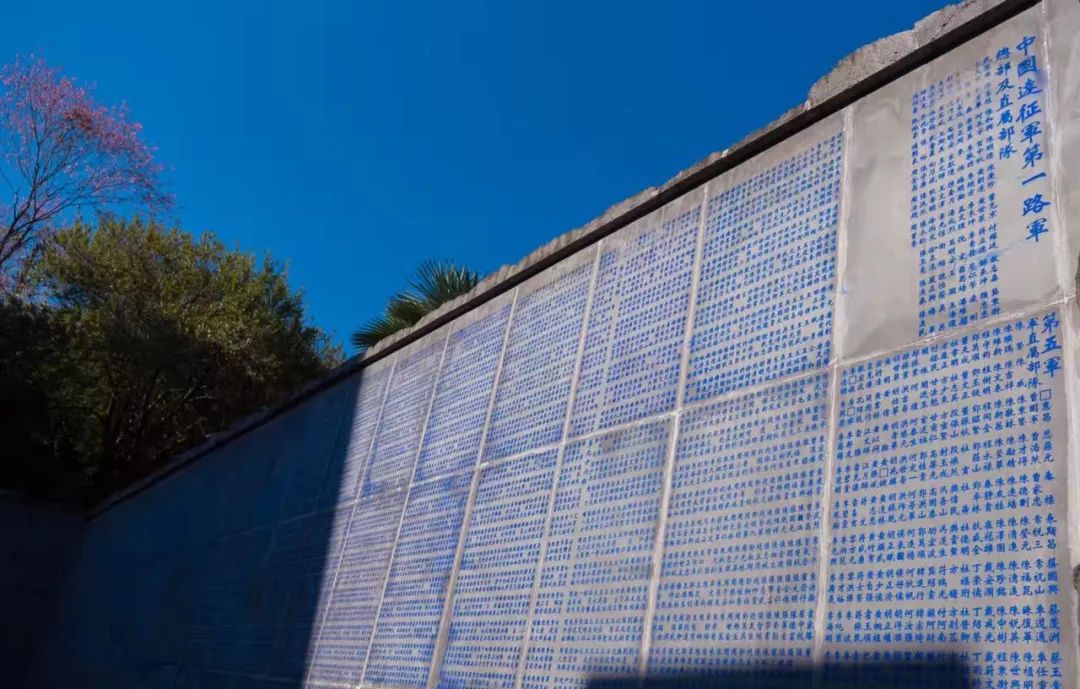
Western Yunnan Anti-Japanese War Memorial Site Album

Across the Tengchong Bridge, to the south of Gaoligong Mountain is the small border town of Tengchong.
Tengchong was built with volcanic stones, but it was completely destroyed during the Anti-Japanese War. The Chinese and American armies fought together, crossed the Nujiang River, and started the first battle to recover China in western Yunnan. Tengchong was the first county town recovered by the National Army during the Anti-Japanese War. The people of Tengchong are still grateful for the sacrifices of the Chinese and American soldiers. 1 945 War Cemetery Built .
At the National Memorial Cemetery at the foot of Fengshan Mountain in Tengchong, I met several groups of tour groups. There was no noise like other tourist attractions . Each tour guide explained the history angrily in a low voice, while the tourists listened solemnly. , lay flowers and bow.
The differences between Eastern and Western cultures can be seen from the layout of the tomb:

The tombstones of U.S. military martyrs are of the same size and arranged equally, reflecting the Western value of "all people are created equal."

The tombstones of the martyrs of the national army are arranged layer by layer according to their military rank, from superior soldiers upwards. The tombs of the martyrs of officers at the school level and general level are erected on separate hills, just like the strict hierarchy in their lifetime.

What is also eye-catching is a simple monument to the heroes, commemorating the two agents who died on the eve of victory: Wang Shurong, lieutenant colonel of the 11th Group Army of the Chinese Expeditionary Force, and special agent Wang Shurong of the 71st Army. Second Lieutenant Intelligence Officer Li Shengfen.
Baidu information: Wang Shurong, a Burmese overseas Chinese, is fluent in four languages: English, Burmese, Indian, and Jingpo. He graduated from the Kunming Fifth Branch of the Huangpu Army Military Academy. He went to the China-Burma border and Bhamo three times to reconnoiter the enemy's situation, and obtained information on Japanese barracks and warehouses. The Japanese army suffered heavy losses in the bombing. On the eve of the counterattack in 1944, Wang Shurong went to Tengchong again, but was captured by the Japanese army and tortured. He was only 21 years old when he died.

Under the wall of the National Memorial Cemetery where the ashes of martyrs are buried, the corpses of the Japanese 148th Regiment captain and other invaders were buried kneeling. Mr. Li Gengen, the patriotic county magistrate of Tengchong, inscribed a stone with the name "Japanese Tomb" to forever guard the tomb of the heroes of the Anti-Japanese War.

At the National Memorial Cemetery of the Chinese Expeditionary Force in Tengchong, Yunnan, all the visitors solemnly held flowers and bowed to pay homage. Here, I saw the most solemn-looking tourists in China.

From 1942 to 1944, in order to protect China's only external communication channel - the Burma Highway, the Chinese government twice sent nearly 300,000 troops into Myanmar to fight against the Japanese invaders. After paying the price of more than 100,000 casualties, the entire country Annihilate the Japanese troops in Burma. In this battle, the Chinese Expeditionary Force, equipped and trained by the United States, shone brightly. After the bloody battle, the Japanese invaders began to flee. During the class struggle movement, many Chinese soldiers who stayed in the mainland were wronged. The Anti-Japanese War veterans finally had time to re-evaluate their historical achievements. Thank God, history has not been forgotten.

Look at another person’s record: Yesterday, I hiked Gaoligong Mountain and the Southern Silk Road from Baoshan to Tengchong all day long. I was tired but also very relaxed. Stop in Tengchong Heshun Ancient Town in the evening. In the morning, we arrived at the Tengchong Memorial Cemetery, which is the best-preserved Anti-Japanese War cemetery in China. It is said that it was preserved by local people who guarded it to the death during the Cultural Revolution (there is also a saying that it was rebuilt after being destroyed). Tengchong was the first battle to defeat the Japanese invaders and regain the country. The war was far more tragic than what was described in "My Commander, My Regiment". Hump Route, American Allied Forces, Savage Valley, Cannibals, and searching for the remains of the National Expeditionary Force in Myanmar. The young tour guide took off his glasses and wiped his tears from time to time during the explanation. Everyone who listened was moved. There were not a few tourists who were in tears. Facing Lin Li The tombstones and the layout of the cemetery that combines Chinese and Western styles gave the visitors a profound patriotic education.
